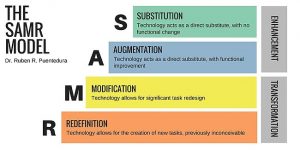Coding
Coding is an entirely foreign concept to me, and we explored it in class this week. It was exciting to see the resources that are available to students and to see the modern and complex things that students are learning about. I can’t say I found the experimentation with coding to be entirely useful to me – I was able to create something but the process was frustrating for very little product at the end. I also can’t see myself using it as a music teacher. I’m excited for my peers in the class who might be able to use this resource in the future.
The presentation my peers gave on cell phone use was interesting. I personally don’t think we should be afraid to tell students to put their phones away. I like the idea of having “technology breaks” to give students time to use their phones if they need to, but they shouldn’t just have free access to them all the time. I think, by teaching students that there are appropriate times to use a cell phone and to not, we are teaching them a valuable life skill.

Recent Comments